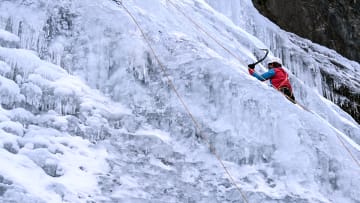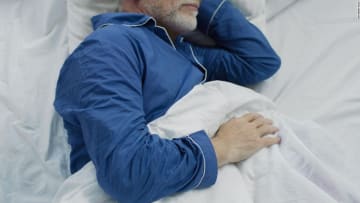دبي، الإمارات العربية المتحدة (CNN) -- يرى الخبراء أنّ البطء بالمشي المرافق للتقدّم بالعمر، لطالما نُظر إليه كمنبه لضعف متزايد في الجسم قد يتسبّب بالسقوط وإعاقات أخرى. كما كشفت الأبحاث الناشئة التي شملت مجموعات صغيرة من كبار السن أن البطء في المشي سنة بعد أخرى، قد يكون مؤشرًا مبكرًا للتدهور المعرفي.
وتفيد الدراسات أنّ ذلك قد يكون ناتجًا عن تقلص الحُصين الأيمن، وهو جزء من الدماغ مرتبط بالذاكرة.
لكن ليس كل علامات التدهور المعرفي تشي بالإصابة بالخرف في وقت لاحق، إذ بين 10 و20٪ فقط من الأشخاص الذين يبلغون 65 عامًا وما فوق ويعانون من ضعف إدراكي خفيف أو اختلال معرفي معتدل، يصابون بالخرف في العام التالي، بحسب المعهد الوطني للشيخوخة. وأفاد المعهد أنّه "في كثير من الحالات، قد تبقى عوارض الاختلال المعرفي المعتدل على حالها أو حتى تتحسن".
وراهنًا، توصلت دراسة جديدة واسعة النطاق شملت ما يقرب من 17 ألف بالغ تفوق أعمارهم الـ 65 عامًا، إلى أن الأشخاص الذين يسجلون بطئًا متزايدًا في المشي بنسبة 5٪ أو أكثر سنويًا، بالتوازي مع ظهور علامات المعالجة العقلية البطيئة، هم أكثر عرضة للإصابة بالخرف. ونُشرت هذه الدراسة في مجلة "JAMA Network Open"، الثلاثاء.
وكتبت المؤلفة المراسلة تايا كوليير، زميلة باحثة في مدرسة بينينسولا السريرية بجامعة موناش في ولاية فيكتوريا الأسترالية، أنّ "هذه النتائج تسلّط الضوء على أهمية المشي لتقييم مخاطر الخرف".
من هم الأكثر عرضة لخطر الإصابة بالخرف؟
وتابعت الدراسة الجديدة مجموعة من الأمريكيين تفوق أعمارهم الـ65 عامًا، وأستراليين تفوق أعمارهم الـ70 عامًا، لمدة سبع سنوات. وكل سنتين، طُلب من الأشخاص المشاركين في الدراسة الخضوع لاختبارات معرفية بهدف قياس التدهور المعرفي العام، والذاكرة، وسرعة المعالجة، والطلاقة اللفظية.
كما طُلب من المشاركين مرتين كل عامين أيضًا، قطع مسافة 3 أمتار مشيًا، أو حوالي 10 أقدام. ثم تم احتساب متوسط النتيجتين لتحديد طريقة المشي النموذجية للشخص.
وقال الدكتور جو فيرغيز، أستاذ طب الشيخوخة وطب الأعصاب بكلية ألبرت أينشتاين للطب في منطقة برونكس، بمدينة نيويورك الأمريكية، غير المشارك بالدراسة، إنّ الباحثين في الدراسة خلصوا إلى أن أعلى مخاطر الإصابة بالخرف سُجّلت لدى "الأشخاص الذين يعانون من تدهور مزدوج"، أو الأشخاص الذين مشوا ببطء أكثر، وأظهروا أيضًا بعض علامات التدهور المعرفي.
وكتب فيرغيز في مقال افتتاحي مرافق للدراسة نُشر في مجلة "JAMA" الثلاثاء: "بالإضافة إلى ذلك، الأشخاص الذين سثجل لديهم تدهورًا مزدوجًا كانوا أكثر عرضة للإصابة بالخرف من أولئك الذين يعانون من التدهور المعرفي أو البطء بالمشي وحده".
وكانت دراسة تحليل تلوي نُشرت عام 2020، شملت نحو 9 آلاف من البالغين الأمريكيين، كشفت أنّ الارتباط المزدوج بين سرعة المشي وتدهور الذاكرة يشي بالإصابة بالخرف في وقت لاحق.
لكن رغم هذه النتائج، كتب فيرغيز أنّه"لم يُنظر إلى الخلل بالمشي كسمة سريرية مبكرة لدى مرضى ألزهايمر".
الرياضة قد تساعد
وهناك أشياء يمكننا القيام بها مع تقدمنا بالعمر لعكس انكماش الدماغ الذي يصاحب الشيخوخة النموذجية. ووجدت الدراسات أن ممارسة الرياضة الهوائية تزيد من حجم الحُصين، ما يعزز بعض جوانب الذاكرة.
ويعد الحُصين، الذي يقع في عمق الفص الصدغي للدماغ، عضوًا غريب الشكل مسؤول عن التعلم، وترسيخ الذكريات، والملاحة المكانية، مثل القدرة على تذكر المسارات، والمواقع والاتجاهات.
وزادت التمارين الهوائية من حجم الحُصين الأمامي الأيمن بنسبة 2٪، وبالتالي ساهمت بعكس اتجاه التراجع في هذا العضو المرتبط بالتقدم بالعمر لمدة عام أو عامين، وذلك خلال تجربة سريرية عشوائية، وُضعت عام 2011.
وفي المقابل، فإن الأشخاص الذين مارسوا تمارين الإطالة فقط سُجّل لديهم تراجعًا يناهز 1.43٪ في الفترة الزمنية عينها.






